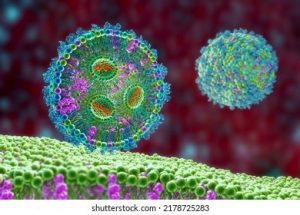Current mRNA researchers around the world are set on treating cancer, diabetes, cystic fibrosis, HIV, and many other diseases. Will mRNA therapeutics amount to more than their viral protection against Covid-19?

Digital representation of mRNA structure. Source
The covid-19 pandemic led to the first mass production of mRNA vaccines. Scientists worked collaboratively and tirelessly to quickly produce this vaccine under the urgency of a global pandemic.
The global success of this vaccine brought great attention to other developing mRNA therapeutics. These therapeutics are being studied to treat cancer, sickle cell anemia, cystic fibrosis, heart failure, and even food allergies.
So, when will these therapies be ready?
Unfortunately, there are still some kinks to work out.
Currently small molecules make up 90% of pharmaceutical drugs. These organic compounds have dominated the medical world as they can diffuse into cells and bind precisely to cellular targets responsible for disease.
People with cystic fibrosis (CF) currently rely on small molecule drugs. The drug Trikafta was approved for use by health Canada in 2022 and by 2030 is projected to decrease the number of CF-related deaths by 15%.
CF is caused by the loss of function in the CFTR protein. Trikafta helps return the CFTR to somewhat normal function.
mRNA therapy for CF would work differently. mRNA could provide the genetic information to produce the fully functional protein.
Those with CF would still carry DNA which codes for the dysfunctional CFTR protein. But, in the cell cytoplasm delivered mRNA could produce the functional protein and reverse the disease.
As great as that sounds, it will be sometime for mRNA therapeutics to overtake the use of organic drugs for CF. As of now most clinical trials are still struggling to see mRNA live up to it’s full potential.
The main issue with mRNA therapeutics is targeting the diseased cells. mRNA is delivered in lipid nanoparticles (LNPS).

mRNA at cell surface in a LNP. source
Altering these LNPs to be specifically taken up by diseased cells has proved to be a great challenge to be overcome by mRNA scientists.
For now, small molecule drugs hold their place as the number one drug type.
Globally researchers are working tirelessly to prove that the promised revolutionary therapeutics are not just a pipe dream.
Medicine is a dynamic field and new therapeutics like mRNA are worth looking out for!

I found your blog very interesting to read. I thought it would be great to add more info to the paragraphs that only have one question or one sentence without a lot of information. As a reader, I thought it would help me feel more engaged.
Your blog post was nicely done and I really enjoyed reading it. I appreciate how you acknowledge the contributions of small-molecule drugs towards the field of medicine and the challenge many scientists are facing in attempting to modify these molecules to work in our favour. As science can be a field that is unfamiliar to many people, I find that as a reader, this journalistic-style your blog post followed is easy to understand and has the potential to reach to a wider range of audience.